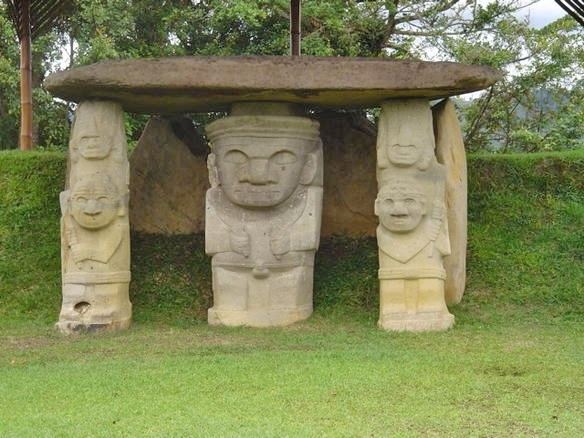 | ||
The Valley of the Statues is a valley in the Andean Region of Colombia, containing more than 500 statues of unknown origin. The nearest town is San Agustín, Huila. Puracé Natural Park, on the banks of the Magdalena River contains many, with more as yet still buried. The site is open to tourists.
Contents
Discovery
The statues were first written about in the mid-18th century by a Spanish monk, Fray Juan de Santa Gertrudis.
Age and Origin
Some archeologists estimate a carving date of the 6th century B.C., while others believe that they were erected just prior to the Spanish Conquest.
The origin of the carvers remains a mystery, as most of the site is unexcavated, and no writings have been discovered yet. Several of the statues are of animals such as gorillas or African elephants and others wear turbans. The statues vary in height, the tallest being 23 feet (7.0 m) tall. They are suspected to be funereal statuary. In other regions of the archaeological site where large burial mounds are located, you will see more intimidating figures such as snakes, frogs, and birds strategically place to stand guard for increased protecting during the afterlife. Statues of deities or carving on the ground, of both solar gods, males, and lunar gods, females. Theses figures and statues provide researchers with a little insight to what this civilization thoughts and perception of life and death are.
